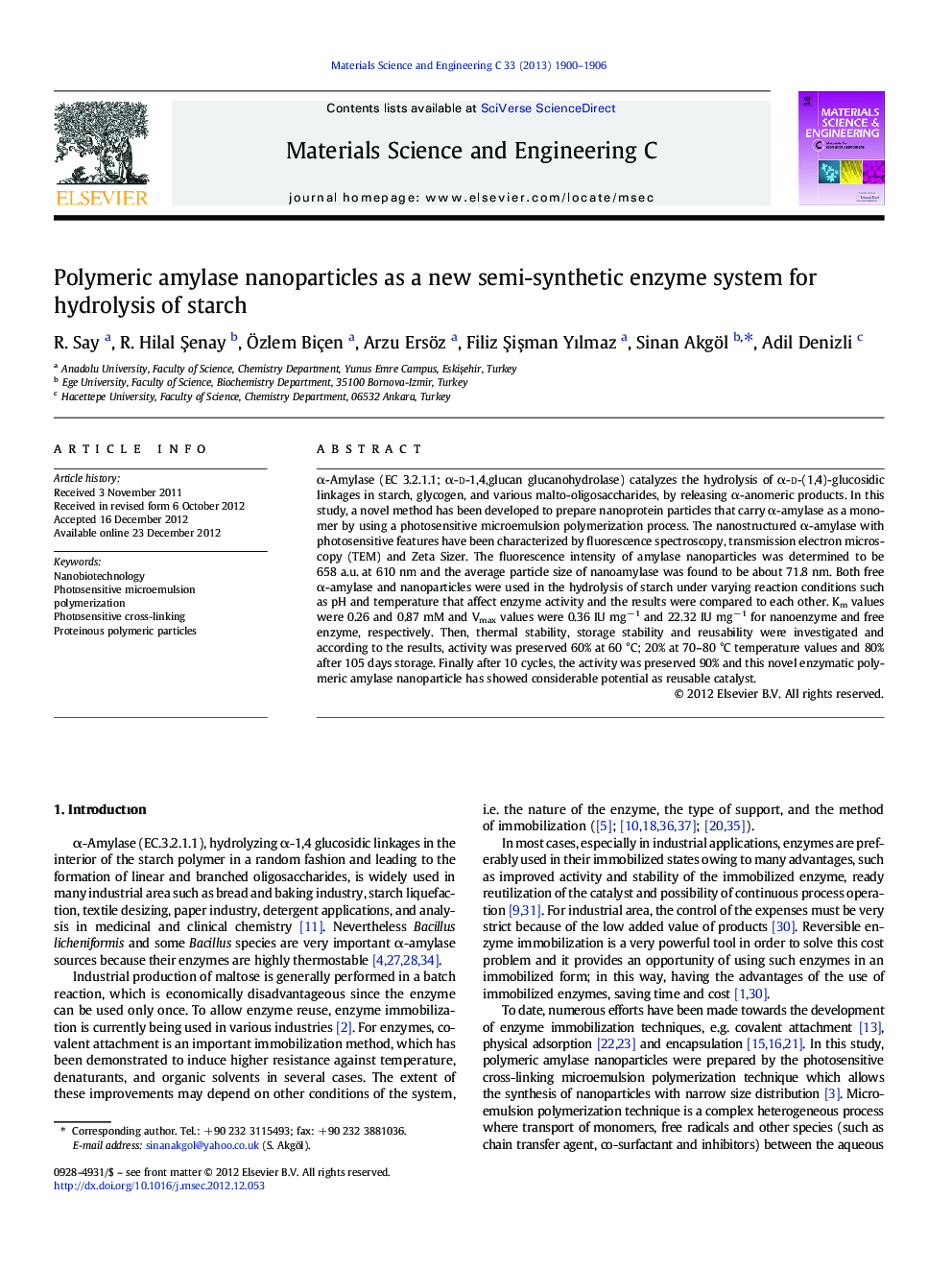| Article ID | Journal | Published Year | Pages | File Type |
|---|---|---|---|---|
| 1429387 | Materials Science and Engineering: C | 2013 | 7 Pages |
α-Amylase (EC 3.2.1.1; α-d-1,4,glucan glucanohydrolase) catalyzes the hydrolysis of α-d-(1,4)-glucosidic linkages in starch, glycogen, and various malto-oligosaccharides, by releasing α-anomeric products. In this study, a novel method has been developed to prepare nanoprotein particles that carry α-amylase as a monomer by using a photosensitive microemulsion polymerization process. The nanostructured α-amylase with photosensitive features have been characterized by fluorescence spectroscopy, transmission electron microscopy (TEM) and Zeta Sizer. The fluorescence intensity of amylase nanoparticles was determined to be 658 a.u. at 610 nm and the average particle size of nanoamylase was found to be about 71.8 nm. Both free α-amylase and nanoparticles were used in the hydrolysis of starch under varying reaction conditions such as pH and temperature that affect enzyme activity and the results were compared to each other. Km values were 0.26 and 0.87 mM and Vmax values were 0.36 IU mg− 1 and 22.32 IU mg− 1 for nanoenzyme and free enzyme, respectively. Then, thermal stability, storage stability and reusability were investigated and according to the results, activity was preserved 60% at 60 °C; 20% at 70–80 °C temperature values and 80% after 105 days storage. Finally after 10 cycles, the activity was preserved 90% and this novel enzymatic polymeric amylase nanoparticle has showed considerable potential as reusable catalyst.
► Developing to prepare nanoprotein particles carrying α-amylase ► Characterization of nanostructured α-amylase ► Usability of α-amylase nanoparticles in hydrolysis of starch
